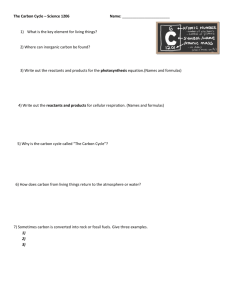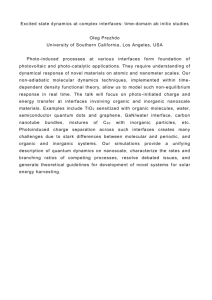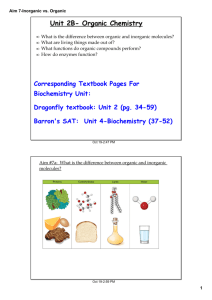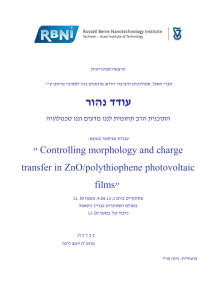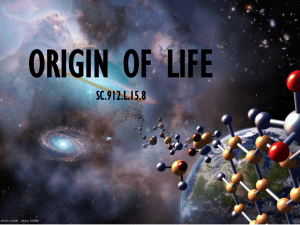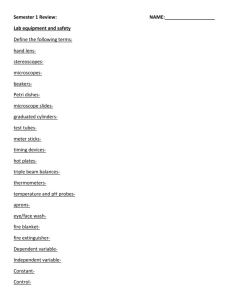Eco Notes Ch 2
advertisement
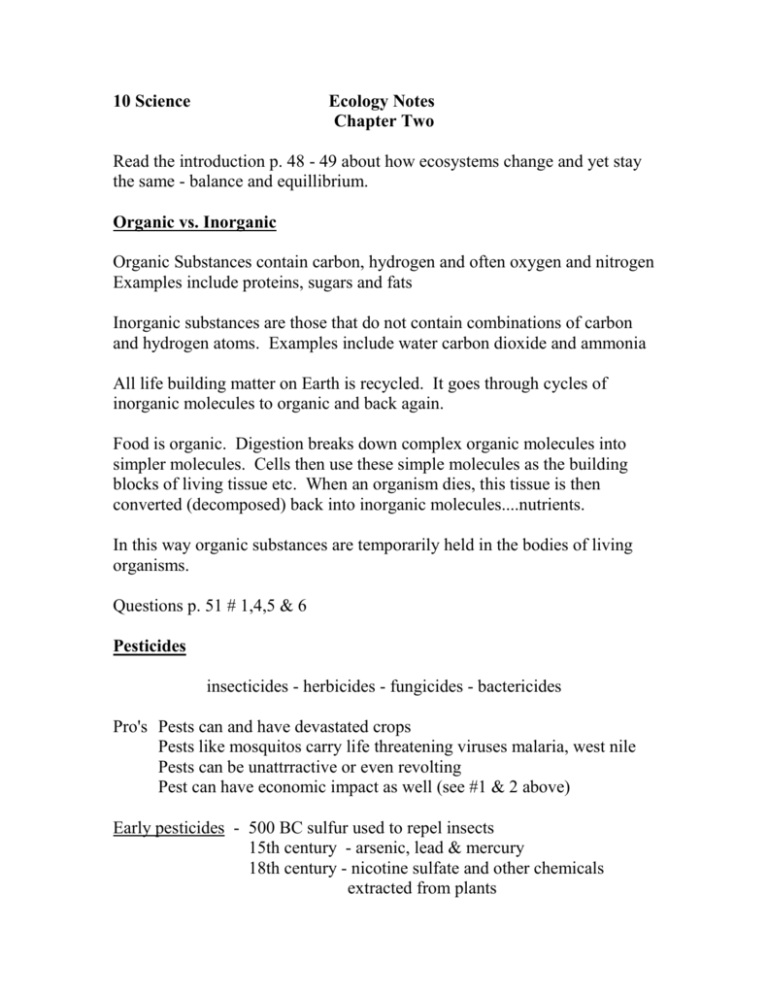
10 Science Ecology Notes Chapter Two Read the introduction p. 48 - 49 about how ecosystems change and yet stay the same - balance and equillibrium. Organic vs. Inorganic Organic Substances contain carbon, hydrogen and often oxygen and nitrogen Examples include proteins, sugars and fats Inorganic substances are those that do not contain combinations of carbon and hydrogen atoms. Examples include water carbon dioxide and ammonia All life building matter on Earth is recycled. It goes through cycles of inorganic molecules to organic and back again. Food is organic. Digestion breaks down complex organic molecules into simpler molecules. Cells then use these simple molecules as the building blocks of living tissue etc. When an organism dies, this tissue is then converted (decomposed) back into inorganic molecules....nutrients. In this way organic substances are temporarily held in the bodies of living organisms. Questions p. 51 # 1,4,5 & 6 Pesticides insecticides - herbicides - fungicides - bactericides Pro's Pests can and have devastated crops Pests like mosquitos carry life threatening viruses malaria, west nile Pests can be unattrractive or even revolting Pest can have economic impact as well (see #1 & 2 above) Early pesticides - 500 BC sulfur used to repel insects 15th century - arsenic, lead & mercury 18th century - nicotine sulfate and other chemicals extracted from plants Next wave of pestisides - chemically produced 1939 dichlorodiphenoltrichloroethane DDT (banned in 1971) worldwide 2.5 million tonnes annually used in shampoos, matresses, paints Important variable - how fast they decompose Persistance (see p. 53) Bioconcentration? (see figure p. 54) Some pesticides (chlorine based)do not dissolve in water (only fat). They therefore cannot be excreted and thus accumulate in fatty tissue. (p. 54) Modern Pesticides Not Chlorine based - soluble in water - can be broken down by the liver and excreted - low persistance Shelf life of a pesticide - caused by organisms adapting to the environment Ironically by applying pesicides we inadvertantly produce species with greater resilience to the pesticide - "super bugs" - how? (see p. 55) Complete handout on Pests and the carbon cycle Questions p. 58 # 2 - 9 Photosynthesis & cellular respiration p. 61 # 2,3,5,&6 6CO2 + 6H2O + light energy C6 H12O6 + 6O2 C6H12O6 + 6O2 6H2O + 6CO2 + energy The Carbon Cycle Carbon is a key element for all living things. It is found in both inorganic and organic compounds. Inorganic reservoirs (in order of increasing "delay") of carbon are: carbon dioxide in our atmosphere - about .03% for 3 years carbon dioxide in our oceans - for about 3000 years carbonates in the earth's crust - for about 3000000 years Delay refers to the amount of time the carbon "spends" in this inorganic form before it is cycled into organic carbon through photosynthesis. Organic reserviors (in order of increasing "delay") of carbon are: bodies of living organisms bodies of dead organisms where decomposition occurs bodies of dead organisms where decomposition does not occur due to a lack of oxygen i.e. bogs, peat, coal & oil These reservoirs and the delays above maintain balance to sustain ecosystems. The effect of human impact is essential to offset this balance either by deforestation - which reduces the amount of photosynthesis and thereby decreases the amount of CO2 removed from the atmosphere burning fossil fuels - which increases the amount of CO2 in the atmosphere This is where an understanding of the greenhouse effect and its effect on global temperatures comes in. (refer to an inconvenient truth) Question p. 65 # 1 - 8


